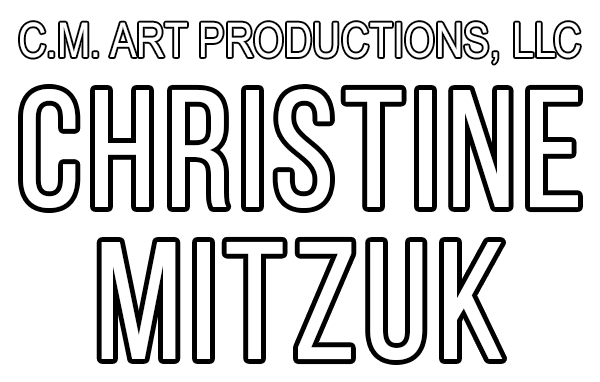You need to enlarge and transfer a drawing to your canvas but your usual printing service is currently unavailable. Not a problem. My solution: tiling.
I scan my drawing and resize it to the desired painting size in Photoshop, keeping the resolution somewhere between 150 – 250 ppi. This resolution works just fine on my home office printer. My goal being I want to have a fairly clean, not fuzzy print of the art.
Next I chop up the image in Photoshop, leaving about 1″ of overlap where the sections will be joined together.

Then I print each section out on regular 8.5″x11″ 20 lb printer paper. Some programs and printers can do this for you but my printer doesn’t have that feature so this solution works great for me.
(Edit: a friend pointed out that there’s another way to print the image in pieces. She wrote: Save as a .pdf in the size you want to print and open in Acrobat [I tried it out in Acrobat Reader]. When you select print it will give you the option to print as a poster on multiply sheets including asking about how much overlap you want. Also, if you need to drop a grid overlay on an image, Gimp makes it easy and free. Go to Filters>Render>Pattern>Grid. You can adjust the thickness of the lines and the size of the grid squares. The grid makes lining up pages easier, too.)
Next: tiling.
Don’t have a light box, or your light box isn’t big enough? No problem, use a window. I tape up the first piece (top right portion of the full picture) onto the window, then with the paper back lit from the window I can align the drawing as I place the additional pieces. I’m using the cheap blue house painters tape but I suspect you could use masking tape. Clear plastic tape might pose a problem when transferring because it’s a little too rigid. I want something that won’t resist my hard pencil or pen.
I cut away excess white paper where a sheet is placed on top of the previous sheet of paper. This helps align the drawing.
I trim the upper and right edges of the final piece so there’s clean overlap.


I tape both the front side along the overlap seams, as well as behind. In this way I overlap and connect the 4 sections without leaving too much flapping around. I don’t put a long strip of tape along the seams because it interferes too much when I transfer. I’m going to move a few of the pieces of tape on the back into areas where there aren’t any lines, or at the very least reduce the size of the tape.

Now I have a full image ready to transfer to my painting surface. I’m really looking forward to painting this one!




